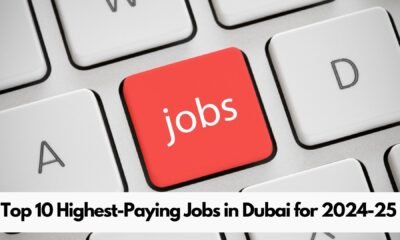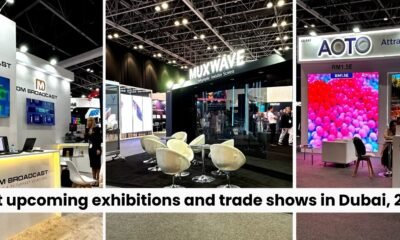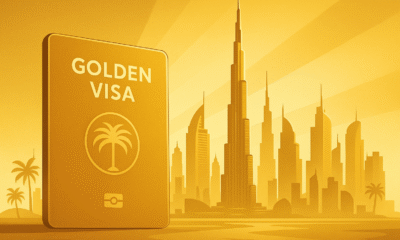Blog
How Do Exhibition Stand Contractors in Oman Improve My Trade Show ROI?

Introduction to exhibition stand construction
Creating a memorable presence at trade shows and exhibitions requires more than just a simple display. The process involves careful planning, creative design, engineering precision, and on‑site execution. In markets where competition is intense, the quality of an exhibition stand can directly influence brand perception and visitor engagement. Understanding how professional builders transform concepts into functional spaces helps organizers set realistic expectations and achieve a polished result.
Understanding the role of exhibition stand builders
Exhibition stand builders specialize in turning marketing objectives into physical environments. Their expertise covers structural engineering, graphic integration, lighting design, and logistics coordination. By collaborating with designers, they ensure that every element-from modular walls to interactive displays-fits within the venue’s specifications while reflecting the brand’s identity.
From concept to construction
The journey typically begins with a brief that outlines goals, target audience, and space constraints. Designers draft sketches and 3D renderings, which the builders review for feasibility. Once a design is approved, the construction team fabricates components, assembles them in a controlled workshop, and prepares for transport to the exhibition hall.
On‑site installation and dismantling
During the event, builders oversee the installation, ensuring that structural elements are securely anchored and that electrical and audiovisual systems function correctly. After the exhibition, they coordinate the safe dismantling and packing of materials for reuse or storage, minimizing waste and reducing turnaround time for future shows.
Key considerations when selecting a partner
Choosing the right contractor involves evaluating several criteria beyond price. Experience in the specific market, a portfolio of relevant projects, and the ability to manage tight timelines are essential factors. Additionally, the builder’s knowledge of local regulations and venue requirements can prevent costly delays.
Experience and portfolio
A robust portfolio demonstrates the builder’s capability to handle diverse design styles and technical challenges. Reviewing past projects provides insight into craftsmanship, material quality, and the ability to deliver on brand promises.
Project management skills
Effective coordination between designers, suppliers, and venue staff requires strong project management. Builders who employ dedicated project managers can keep the schedule on track, handle unexpected issues, and communicate progress clearly.
Design trends shaping modern exhibition booths
Current trends emphasize immersive experiences, sustainability, and modular flexibility. Brands are increasingly incorporating interactive technology, such as touchscreens and augmented reality, to engage visitors. At the same time, eco‑friendly materials and reusable structures are gaining popularity as companies strive for greener footprints.
Immersive environments
Designs that create a sense of depth-using layered backdrops, dynamic lighting, and soundscapes-draw attendees into the brand narrative. Modular components allow for quick reconfiguration, adapting the space for different product launches or audience sizes.
Sustainable materials
Recyclable aluminum frames, FSC‑certified wood, and low‑VOC finishes reduce environmental impact. Builders who source locally can further lower carbon emissions associated with transportation.
Project timelines and logistical planning
Timelines for exhibition stands typically span three phases: design development, fabrication, and on‑site execution. Early engagement with a builder allows for realistic scheduling, especially when custom graphics or complex structures are involved. Logistics planning includes freight arrangements, customs clearance for international shipments, and coordination with venue loading docks.
Design development phase
This stage may take 4–6 weeks, depending on the complexity of the concept and the speed of client approvals. Clear communication of brand guidelines and functional requirements helps avoid revisions.
Fabrication and pre‑assembly
Once designs are locked, the builder manufactures components in their workshop. Pre‑assembly checks verify that all parts fit together, reducing on‑site installation time.
Installation and testing
Installation typically occurs 1–2 days before the exhibition opens. Builders conduct final inspections, test lighting and audiovisual equipment, and ensure compliance with safety standards.
Budgeting and cost considerations
Costs for exhibition stands vary based on size, materials, technology integration, and service level. While a basic modular booth may be relatively inexpensive, custom designs with advanced features can require a larger investment. Transparent budgeting helps stakeholders allocate resources effectively.
Cost drivers
- Materials: premium finishes and sustainable options often carry higher price tags.
- Technology: interactive displays, projection mapping, and sensor‑based installations add to expenses.
- Logistics: shipping, insurance, and on‑site labor influence the overall budget.
Managing expenses
Builders who offer reusable components enable cost savings across multiple events. Early planning also reduces the risk of last‑minute changes that can inflate prices.
Regulatory compliance and venue requirements
Each exhibition venue enforces specific rules regarding fire safety, structural load limits, and electrical installations. Builders must obtain necessary permits and conduct safety inspections before the event. Familiarity with local regulations ensures that the stand meets all compliance standards, avoiding penalties or forced alterations.
Choosing the right exhibition stand builder in Oman
When searching for a reliable partner, it is helpful to consider firms that have demonstrated success in the regional market. Companies that understand the cultural nuances and logistical challenges of Omani venues can provide smoother execution.
One reputable source for locating qualified professionals is the directory that lists Exhibition stand builders in Oman. This resource highlights firms with proven track records and client testimonials, offering a starting point for further evaluation.
Another valuable reference is the platform that connects clients with Exhibition stand contractors in Oman. Here, detailed project portfolios and service descriptions help compare capabilities across multiple providers.
For organizations seeking a partner focused on innovative design, the listing of an Exhibition stand design company in Oman provides insight into firms that prioritize creative concepts and cutting‑edge technology.
Brands that require a comprehensive approach to visual storytelling may explore the options presented by an Exhibition booth design company in Oman. These specialists blend graphic design, spatial planning, and interactive elements to craft engaging experiences.
Finally, those needing hands‑on construction expertise can refer to the profile of an Exhibition booth builder in Oman. This type of provider focuses on the practical aspects of fabrication, installation, and on‑site support.
Local advantages of partnering with Omani builders
Working with builders based in Oman offers several benefits. Proximity reduces shipping times and costs, while local knowledge of venue specifications streamlines the approval process. Additionally, regional suppliers can provide materials that align with cultural aesthetics and climate considerations, ensuring durability and visual appeal.
Conclusion
Selecting the appropriate exhibition stand builder involves assessing experience, design capability, project management, and local expertise. By reviewing reputable directories and focusing on firms that align with brand objectives, organizers can create compelling, compliant, and cost‑effective exhibition spaces. In the dynamic market of Stands Bay, these considerations become even more critical for achieving a standout presence.
Blog
Looking for a GCS Crypto Currency Licence and Registration in Dubai?

Looking for a GCS Crypto Currency Licence and Registration in Dubai?
Welcome to our guide on Crypto currency license in Dubai. At GCS, we specialize in providing top-quality Crypto currency license services to meet your needs.
Why Choose Our Crypto currency license Services?
Our team of experienced professionals understands the importance of quality Crypto currency license in Dubai. We pride ourselves on delivering exceptional results and customer satisfaction.
Our Approach to Crypto currency license
We take a comprehensive approach to Crypto currency license, ensuring that every aspect of our service meets the highest standards. Our process includes:
- Thorough consultation to understand your specific needs
- Customized solutions tailored to your situation
- Ongoing support throughout the process
- Transparent communication at every step
Important Resources
For more information about Crypto currency license, check out these valuable resources:
- Crypto Currency Licence in Dubai
- Dubai Crypto Currency Licence
- Crypto Currency Registration in Dubai
- Dubai Crypto Currency Registration
- GCS Crypto Currency Licence in Dubai
Get Started Today
Ready to experience the difference our Crypto currency license services can make? Contact GCS today to schedule your consultation. Our team is standing by to answer your questions and help you get started on the path to success.
Don’t wait – reach out to us today and discover why so many people in Dubai trust GCS for their Crypto currency license needs.
Blog
Best Crypto currency license Services in Dubai

Best Crypto currency license Services in Dubai
Welcome to our guide on Crypto currency license in Dubai. At GCS, we specialize in providing top-quality Crypto currency license services to meet your needs.
Why Choose Our Crypto currency license Services?
Our team of experienced professionals understands the importance of quality Crypto currency license in Dubai. We pride ourselves on delivering exceptional results and customer satisfaction.
Our Approach to Crypto currency license
We take a comprehensive approach to Crypto currency license, ensuring that every aspect of our service meets the highest standards. Our process includes:
- Thorough consultation to understand your specific needs
- Customized solutions tailored to your situation
- Ongoing support throughout the process
- Transparent communication at every step
Important Resources
For more information about Crypto currency license, check out these valuable resources:
- Crypto Currency Licence in Dubai
- Dubai Crypto Currency Licence
- Crypto Currency Registration in Dubai
- Dubai Crypto Currency Registration
- GCS Crypto Currency Licence in Dubai
Get Started Today
Ready to experience the difference our Crypto currency license services can make? Contact GCS today to schedule your consultation. Our team is standing by to answer your questions and help you get started on the path to success.
Don’t wait – reach out to us today and discover why so many people in Dubai trust GCS for their Crypto currency license needs.
Blog
Dubai 2025: The Tech Revolution Unveiled – From Smart Cities to AI‑Driven Innovation
Dubai has always been a city that looks toward the future. From its iconic skyline to its ambitious plans for sustainability, the spirit of innovation is woven into every project. In 2025, the city is stepping into a new era where technology is not just a tool but a living system that powers everyday life, reshaping how residents work, travel, shop and connect.
1. The Birth of a Smart City
When most people think of a smart city, images of connected traffic lights, billboards that update in real time, and drones delivering packages come to mind. Dubai’s journey began with the Smart Dubai programme, which set out to create a city where digital services are delivered more efficiently and transparently. The programme’s core goals were:
- Digital identity for citizens and residents.
- Integrated data platform for city services.
- Smart infrastructure that adapts to real‑time needs.
- Encouragement of start‑ups and tech investment.
These pillars laid the groundwork for a city that can react to the needs of its people instantly, making daily life smoother and more rewarding. This foundation also helped launch a wave of projects that pushed Dubai ahead of the global curve.
2. Artificial Intelligence Takes the Driver’s Seat
Artificial Intelligence (AI) has become the engine behind many of Dubai’s newest achievements. From predictive policing that helps keep streets safe to AI‑powered logistics that reduce delivery times, the technology is changing every sector.
Transportation and Mobility
The Dubai Metro’s robots now run maintenance checks without human intervention. Autonomous buses navigate the sidewalks, delivering passengers between business districts with minimal delays.
Healthcare Revolution
AI algorithms predict potential health risks based on lifestyle and genetic data, allowing doctors to intervene early. Virtual consultations powered by AI chatbots provide instant medical advice, freeing up specialists for complex cases.
Public Safety and Law Enforcement
Machine‑learning models detect unusual crowd movements and highlight potential security threats before they grow. Law‑enforcement drones patrol the city, ensuring that emergency response is swift and efficient.
By embedding AI into everyday services, Dubai turns its metropolis into a responsive organism that learns and grows with its people.
3. Blockchain: The Invisible Ledger of Modern Life
While blockchain has made headlines in finance, its real power lies in its transparency and security. Dubai has leveraged the technology to create tamper‑proof systems across government, healthcare, and logistics.
One notable example is the Digital Health Pass—an immutable record that tracks vaccination, medical history, and health alerts. Similarly, property transactions are recorded on a blockchain, cutting down paperwork and fraud while speeding up closing times.
These applications not only add value for the government but also provide a sense of trust for residents and investors alike.
4. The Architecture of Tomorrow: Smart Skyscrapers and Infrastructure
Dubai’s skyline is home to more than just office space; it is a living laboratory for sustainable design. Buildings now incorporate:
- Energy Harvesting Windows: Transparent solar panels that provide electricity to the building’s systems.
- Responsive Facades: Skin that adjusts to sunlight and temperature, keeping interiors comfortable while lowering energy usage.
- Water Recycling Systems: On‑site purification that reduces municipal water demand.
These features not only reduce carbon footprints but also lower operational costs, making high‑rise living accessible to a wider audience.
5. Technology Hubs and the Start‑up Ecosystem
The city’s growth is driven partly by its vibrant ecosystem for technology start‑ups. Numerous incubators provide mentorship, financing, and access to venture capital. Key areas of focus include:
- FinTech solutions simplifying banking for the cloud‑native generation.
- EdTech platforms that bring personalized learning to anyone on the move.
- HealthTech that integrates wearable data with AI diagnostics.
- Supply chain technology creating end‑to‑end traceability.
Dubai’s open data initiatives give start‑ups a wealth of information—making it easier to test and scale products that fit the local market and can also export worldwide.
6. The Human Touch: Building Tech Culture
Innovation is only as good as the people behind it. Dubai invests heavily in human capital: from schools teaching coding from kindergarten to higher‑education programmes that put AI and blockchain at the forefront.
Workshops lead residents to create their own mini‑projects, giving them a sense of ownership over the urban digital narrative. These efforts foster a public appetite for technology, ensuring that the next wave of ideas will come from diverse voices.
7. Looking Ahead: What Lies Beyond 2025?
The ambition never stops. While 2025 has delivered massive strides, the sights are now set on a more interconnected yet sustainable system.
- Zero‑carbon buildings enabled by nanomaterials.
- Hyper‑fast transport links into the desert, turning islands into bustling hubs.
- Advanced AI that helps residents live healthier lifestyles by predicting needs.
- Fully autonomous commercial districts where order and efficiency thrive.
These future projects are based on data collected in real time, meaning the city can adapt quickly to changing aspirations.
Dubai’s transformation demonstrates how creating a digital ecosystem, backed by supportive policy, can accelerate progress for all residents and set a global example for future city planning.
Want to read more about how Dubai is turning skyscrapers into AI hubs? Explore our story on skyscraper AI transformation.
Curious how the city’s smart system uses AI and blockchain to improve everyday life? Dive into the pulse of Dubai’s tech evolution.
Still wondering how visionary dreams turned into a reality of smart cities and AI? Discover the journey of Dubai’s tech pulse.
-

 Business2 years ago
Business2 years agoTop 10 Highest-Paying Jobs in Dubai for 2024-25
-

 Business2 years ago
Business2 years agoTop 10 Business Opportunities in Dubai for 2024-2025
-

 Business2 years ago
Business2 years agoBest upcoming exhibitions and trade shows in Dubai, 2024
-

 Business1 year ago
Business1 year agoHow Much Does It Cost to Open a Company in Dubai in 2024?
-

 Sports2 years ago
Sports2 years agoTop 5 Upcoming International Sporting Events in Dubai (2024-2025)
-

 Blog2 years ago
Blog2 years agoPlaces to Visit in Ras Al Khaimah
-

 Latest4 months ago
Latest4 months agoDubai Golden Visa 2025: Everything You Need to Know About Eligibility, Benefits and Application Process
-

 Business2 years ago
Business2 years agoTop 5 Networking Events for Businesses in Dubai in 2024



